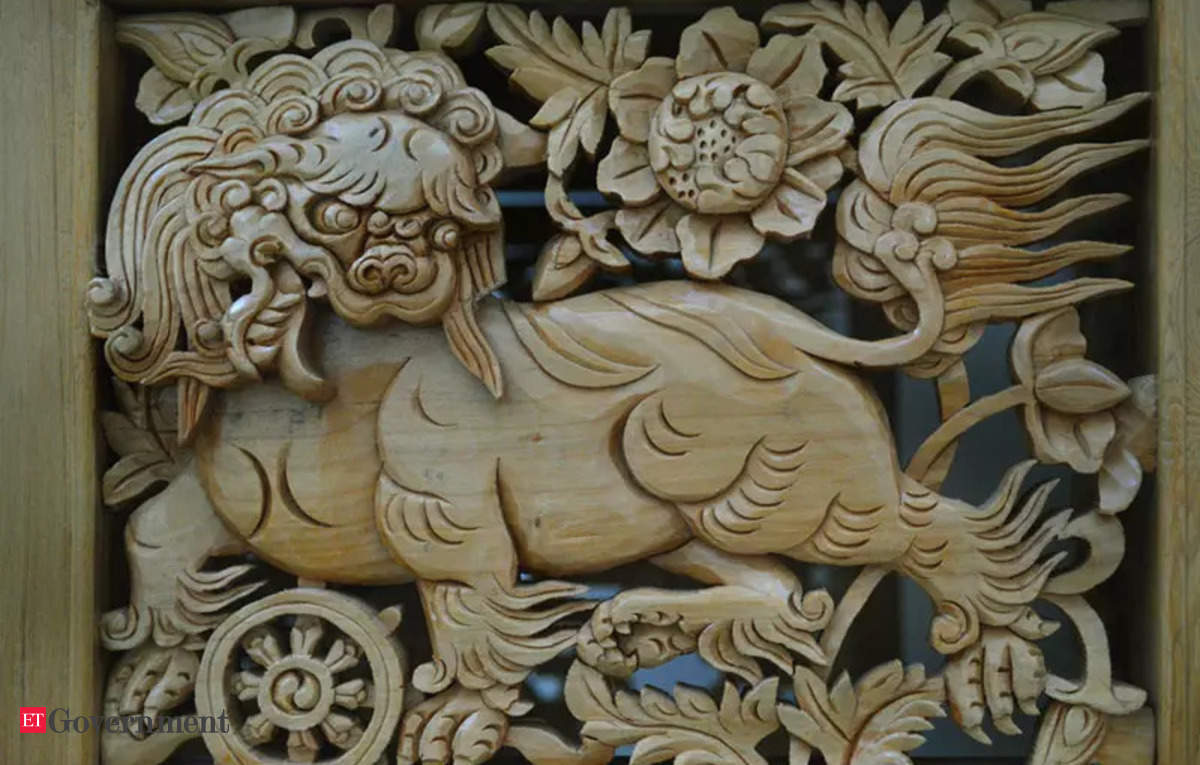Dr. Mohan Dewan assisted by Priyal Dhandhukia

*We do not claim any copyright in the above image. The same has been reproduced for academic and representational purposes only.
Ladakh, as known by all is true paradise on earth. Apart from its scenic beauty and the ever so brave and mesmerising military base and operations conducted, Ladakh is well known for its wood carvings which are intricate works done by the artisans. These wood carvings are called the Ladakh Shingskos.
The woodcraft artists carve out beautiful floral and other abstract designs on woods giving a magnificent look to any kind of furniture. These carvings are done with the use of a mallet and chisel (tools used for carving) on wood. The skills of the woodcrafts and the artisans have been heavily derived from Tibetan Buddhism.
The Pillars, doors and other forms of furniture in the monasteries consist of the Shingskos art work. These works are oldest of their times and therefore have been preserved since decades together. One of the most common kind of furniture which is seen in the Ladakh region is the ‘chokste’ which is a low heighted wooden table oblong in shape. It is intricately carved and finely painted in vivid colours bringing out the auspicious dragons and symbols of Buddhism.
Recently, Ladakh Shingskos has been given Geographical Indication (GI) tag by the Geographical Indication Registry of India. The GI application was filed by the Timber Trade Union. This registration has certainly added significance to the artwork originating from Ladakh as these works have specific meanings and implications with the local culture, society and the rituals.
These carvings are in demand all over the world, especially in countries which follow Buddhism as it provides for a certain spirituality and sanctity to the people who believe in it.
Aligarh Locks

*We do not claim any copyright in the above images. The same has been reproduced for academic and representational purposes only.
The region of Aligarh is a land situated between Ganga and Yamuna which is known for the manufacture of Locks. The city of Aligarh is also very often reffered to as ‘Tala Nagari (City of Locks)’. Aligarh is famously known for its hardware and artware trade particularly in the Lock Industry. The locks are made of various materials which include brass to steel. Although steel locks are becoming more prominent by the day. The brass finishing of the locks is categorized as a traditional way of making the locks. However, the modern way entails the making of steel locks. These locks are manufactured in high volumes as the Aligarh region alone has more than five thousand units. Thus, these locks are exported in foreign countries which have over the course of time resulted in annual revenue of 40,000 crores.
Birth of the Aligarh locks dates back to 125 years prior to Indian independence. It all started with the establishment of a firm called Johnson and Company in Aligarh by a gentleman from England. The company started importing locks into the Aligarh region for its sale from England. This gradually led to a small scale manufacture and production of locks made of sheet metal in Aligarh itself. The company thereafter imported locks from Germany, which were duplicated in Aligarh and sold thereon.
In the year 1950, Surendra Kumar who was an Advocate by profession started a systematic manufacture of locks by way of importing machines and learning new and better techniques. This resulted in good quality locks. However, when the company collapsed in 1975, the locksmiths, engineers, labourers, etc. started their own manufacture and started individually selling these locks. The locks of Aligarh are already included in One District Once Product (ODOP) Scheme.
The GI application was filed by the Tala Nagari Audyogik Vikas which was notably applied on 09/10/2019. The grant of registration is a welcoming boost for the Lock Industry of Aligarh which started the manufacture of locks because of its economic restraints. But now, the GI tag has placed a much need crown of validation and reputation.
Keep yourself acquainted with the latest in IP news. Subscribe to our free newsletter to get regular updates.
Copyright © 2019 R. K. Dewan & Co.